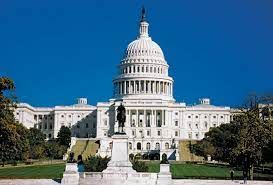S&P 500: -0.26% DOW: -0.93% NASDAQ: -1.31% 10-YR Yield: 4.07%

Last Week on Wall Street - March 8th, 2024
What Happened?
This week, the S&P 500, Dow, and Nasdaq all closed lower, marking the Dow's worst performance since October. Nvidia's significant rally paused on Friday with a drop of over 5%, its largest since late May, yet ended the week up over 6%. In contrast, Apple's stock rose 1% on Friday, ending its longest losing streak since early 2022, despite being the Dow's worst performer with a nearly 5% weekly loss. February's labor market data presented a mixed picture, with job growth exceeding expectations but unemployment rising to 3.9%. Wage growth slowed during the month, suggesting potential inflation cooling. These mixed signals could influence the Federal Reserve's interest rate decisions, with markets pricing in a higher likelihood of a rate cut in June.
Sector winners for the S&P 500 included Utilities (+3.3%), Materials (+1.6%), and Energy (+1.8%). Sector losers included Consumer Discretionary (-2.6%), Technology (-1.6%), and Communications (-0.54%).
US Job Growth Totaled 275,00 in February, unemployment rate rose to 3.9%
- Nonfarm payrolls increased by 275,000 for the month while the jobless rate moved higher to 3.9%. Wall Street had been looking for 198,000 new jobs and unemployment at 3.7%.
- Downward revisions to December and January reduced initial estimates by 167,000 jobs.
- Wages rose just 0.1% on the month, one-tenth of a percentage point below the estimate, and were up 4.3% from a year ago.
The key takeaway - This week's jobs report delivered mixed signals to investors, with the announcement that the US economy added 275,000 jobs in February, surpassing expectations. However, the unemployment rate unexpectedly increased to 3.9%. A closer examination reveals that the surge in employment was largely fueled by the healthcare and government sectors, which combined contributed over 100,000 jobs. This juxtaposition raises questions among investors: Why would the unemployment rate climb amidst such robust job additions? The explanation is two-pronged:
First, the figures for the previous month were significantly revised downwards, suggesting initial estimates were overly optimistic. This month's adjustments further align with the tepid job growth reported last month. Second, the increase in employment last month predominantly consisted of part-time positions, with full-time employment decreasing by 187,000. The Federal Reserve, which has put an emphasis on data-driven decisions, may find this report aligns with its cautious approach to move slowly. Despite surpassing job growth expectations (after revisions), the details hint at emerging frailties within the labor market, implications of which are yet to fully manifest.
Senate Advances Spending Bill, but Government Shutdown Possible
- The U.S. Senate on Friday advanced legislation that would fund several federal agencies through September, but it was unclear whether the chamber would be able to pass it in time to avert a partial government shutdown due to begin at midnight.
- The $467.5 billion spending package would fund agriculture, transportation, housing, energy, veterans and other programs through the end of the fiscal year on Sept. 30.
The key takeaway - The U.S. Senate made progress on Friday with legislation intended to fund several federal agencies until September, though it's uncertain if the bill will pass in time to prevent a partial government shutdown. The $467.5 billion package, aimed at supporting agriculture, transportation, housing, energy, veterans, and other sectors until the fiscal year's end on September 30, had previously cleared the House of Representatives with ease. Despite a bipartisan vote advancing the bill in the Senate, the timing for a final vote remains in doubt due to some Republicans demanding discussions on other issues like immigration, potentially delaying proceedings until Saturday evening.
The possibility of a temporary funding extension exists to sidestep a shutdown, with Senator John Cornyn expressing optimism for a resolution once it's acknowledged that the bill will likely remain unchanged. Nonetheless, approval of this bill doesn't conclude fiscal debates for the year, with discussions on additional funding for military, homeland security, and other sectors looming ahead of a March 22 deadline. This fiscal year's budgetary process has been particularly tumultuous, marked by demands for spending reductions and a temporary leadership void in the House due to internal disagreements among both parties, all against the backdrop of a $34.5 trillion national debt.
Bitcoin Hit an All-Time High then Fell More than 10%, All in a Day
- Bitcoin rose past $69,000 to an all-time high, before tumbling more than 10% Tuesday.
- Many analysts expect bitcoin price to rise further given the demand from bitcoin ETFs and the halving event in April that will limit supply.
- It is unusual for bitcoin to create an all-time price record so close ahead of a halving; that typically happens within a year and a half after the halving.
The key takeaway - Bitcoin investors experienced a volatile day on Tuesday, with the cryptocurrency briefly surpassing $69,000 to reach an all-time high before plummeting to just above $60,000. The rapid fluctuations underscore the unpredictable nature of bitcoin's price trajectory. Key factors influencing the market include significant trading activity in spot bitcoin ETFs, particularly Blackrock’s iShares Bitcoin Trust, and the anticipated bitcoin halving event set for April 20, which will reduce the rate of new bitcoin creation.
While some market observers are optimistic, noting the demand pressure from ETFs and the halving event, others caution against unsustainable rapid price increases and potential volatility driven by these factors. Additionally, concerns exist that the Federal Reserve's monetary policy could negatively impact bitcoin prices, especially given the cryptocurrency's vulnerability to macroeconomic indicators. Despite past patterns suggesting post-halving price surges, the expectation for future movements diverges, highlighting the unpredictable nature of cryptocurrency investments.

From Around the Watercooler
Novo Nordisk Shares Surge After Early Trial Shows New Obesity Drug Could Outperform Wegovy
P&G Launches Tide Tiles in Bid to Change How Laundry Is Done
Temple University reviewing reports of potential match-fixing of men's basketball game
Applebee's and IHOP are launching co-branded locations with both chains under one roof



